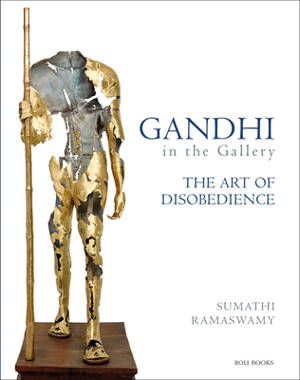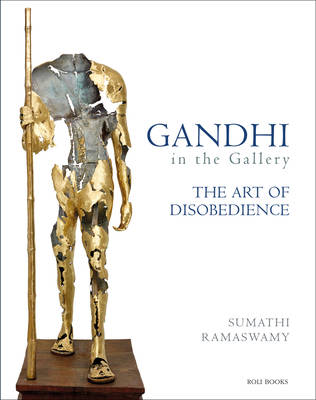
- Afhalen na 1 uur in een winkel met voorraad
- Gratis thuislevering in België vanaf € 30
- Ruim aanbod met 7 miljoen producten
- Afhalen na 1 uur in een winkel met voorraad
- Gratis thuislevering in België vanaf € 30
- Ruim aanbod met 7 miljoen producten
Zoeken
€ 44,45
+ 88 punten
Omschrijving
Mohandas K. Gandhi has been described as 'an artist of non-violence, ' crafting as he did a set of practices of the self and politics that earned him the mantle of Mahatma, 'the great soul.' His philosophy and praxis of satyagraha, non-violent civil disobedience, has been analyzed extensively. But is satyagraha also an aesthetic regime, with practices akin to a work of art? Is Gandhi, then, an artist of disobedience? Sumathi Ramaswamy explores these questions with the help of India's modern and contemporary artists who have over the past century sought out the Mahatma as their muse and invested in him across a wide range of media from painting and sculpture to video installation and digital production. At a time when Gandhi is a hallowed but hollow presence, why have they lavished so much attention on him? A hundred and fifty years after his birth, Gandhi is hyper visible across the Indian landscape from tea stalls and government offices to museums and galleries. This is ironical given that the Mahatma appeared to have had little time for the visual arts or for artists for that matter. Yet fascinatingly, the visual artist has emerged as Gandhi's conscience-keeper, reminding others of the meaning of the Mahatma in his own time and today. In so doing, these artists also reveal why this most disobedient of 'modern' icons has grabbed their attention, resulting in a veritable art of disobedience as an homage to one of the twentieth century's great prophets of disobedience.
Specificaties
Betrokkenen
- Auteur(s):
- Uitgeverij:
Inhoud
- Aantal bladzijden:
- 216
- Taal:
- Engels
Eigenschappen
- Productcode (EAN):
- 9788194425786
- Verschijningsdatum:
- 10/03/2021
- Uitvoering:
- Hardcover
- Formaat:
- Genaaid
- Afmetingen:
- 213 mm x 274 mm
- Gewicht:
- 1020 g

Alleen bij Standaard Boekhandel
+ 88 punten op je klantenkaart van Standaard Boekhandel
Beoordelingen
We publiceren alleen reviews die voldoen aan de voorwaarden voor reviews. Bekijk onze voorwaarden voor reviews.








